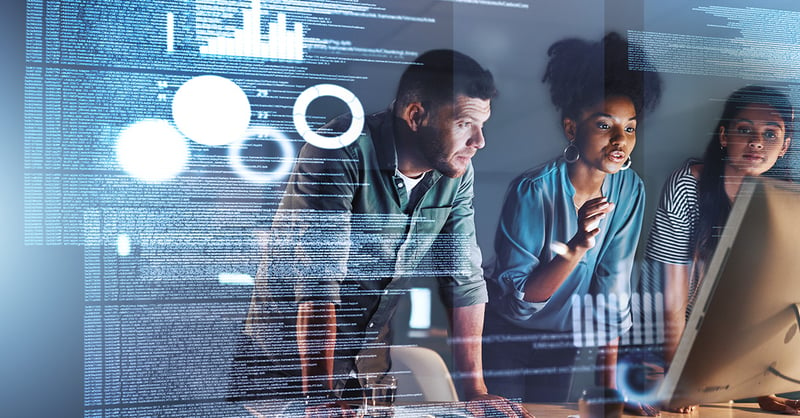I co-hosted Manpower’s webinar “Automation in America 2.0” with George Kelly, Senior Vice President, Manpower U.S. Markets. We shared insights into why the reshaping of the manufacturing landscape is accelerating and how to plan for and stay ahead by building a resilient and adaptive workforce strategy.
I get asked a lot about why this next horizon of manufacturing is different. After all, manufacturing has been undergoing successive technology-related evolutions for decades. In fact, in many ways, manufacturing has led the way for other industries as an example of resilient adaptation. But what sets where we are today apart from where we have been, is both the acceleration of the shifts and their convergence. The three big horizons we are following in manufacturing are Automation, Digitalization, and Sustainability.
Each of these three are going through their own evolutions and are moving targets: manufacturing has been automating for over 100 years; digitalizing for more than 60; and sustainability has a 50-year footprint. BUT...these horizons are accelerating because of the synchronicity between them and the drivers — new technology, new energy resources, and the social and regulatory environment. And that, in turn, demands more of a complete transformation of workforce vs. incremental adoption.
Let me illustrate. New sources of energy and new ways of distributing power; adoption of 5G and the world that comes next; and processing power – progressing from today’s tech into quantum computing are all major changes that can propel us through these horizons faster and open new ones. At the same time, each new horizon drives other impacts. Notably (and one that is continually making the news) is greatly increased - and increasing - need for cybersecurity. Another will be changes and adaptations to the regulatory environment, introducing new standards and requirements that will shape the way we work.
To learn more about how jobs will change over time, read Top 10 Digital Era Job Design Changes
This acceleration of changes in the tech horizons has implications for jobs. As we looked more closely at digital manufacturing, I highlighted research that ManpowerGroup conducted in partnership with MxD, the digital manufacturing institute, and their partners in industry and academia. Our research found that 165 roles will be changed by 50% or greater as a result of digital technologies. And 28% of those roles changing are on the manufacturing floor (you can read about this research in our Future Factory white paper). This is significant. Not only are manufacturers continuing to struggle with skills shortages, but technology will be unleashing a new wave of change. With accelerated digitalization comes accelerated risk, and two of the areas that expect a major explosion in opportunity include risk management and cybersecurity. A Manpower study conducted in partnership with MxD digital manufacturing institute identified 247 roles in the manufacturing realm that will incorporate cybersecurity as 25% or more of their responsibilities going forward. Interestingly, 59% of these roles are not in Information Technology, which means areas including production, finance and engineering will likely be impacted as well.
The third horizon, sustainability, also holds incredible promise across all sectors. There will be an increase in “green” jobs — jobs whose primary responsibilities revolve around sustainability. Other jobs will be “turquoise”—meaning that the job itself is conventional, but will incorporate some “green” functions. A simple example of a “turquoise” role is a quality professional whose job in the future will move from product quality checking to building transparency into the supply chain and managing the quality of the data.
We are looking at the convergence of a tremendous amount of change. What can your organization do to build a workforce that’s resilient and adaptive in the face of these changes? Here are four overarching actions:
Stabilize the now – understand what your workforce wants today and do your best to meet people’s expectations, if not exceed them. Adjust your pay scale and/or upskilling opportunities to attract the talent you need.
Have an adaptive mix – this means weighing the impact and effectiveness factors of your workforce in relationship to efficiency factors to determine the work models and talent sources that are best for you. Your workforce will evolve with technology, so continually optimizing the balance is critical.
Optimize your levers – Market forces are shared by all, but your company may have unique “levers” that frame your workforce into three important value segments: tactical, transitional or transformational. Knowing what you need most at what time is key.
Continuously test the resiliency of your framework – Employ techniques to engage your current workforce and assure your work environment is attractive and relevant to the next generation of workers. This can even start with community involvement.
We go into much more detail about how to apply these actions within your organization. View the entire presentation, Automation in America 2.0 for more details and to get our Workforce Resiliency Checklist for Leaders.





Comments